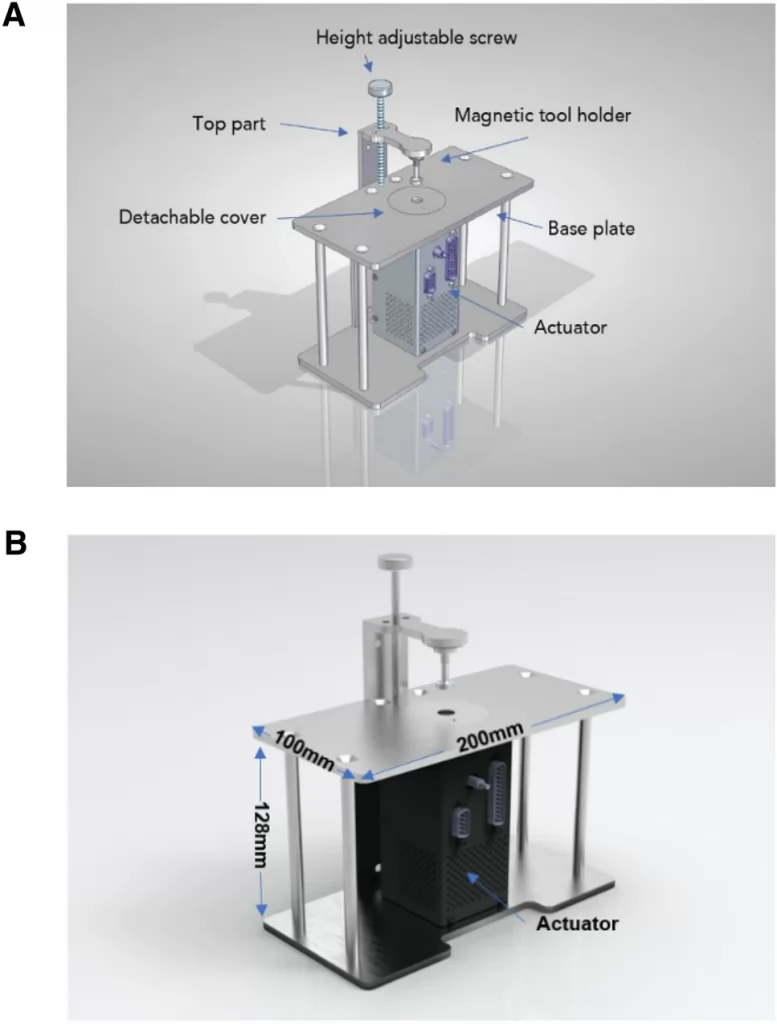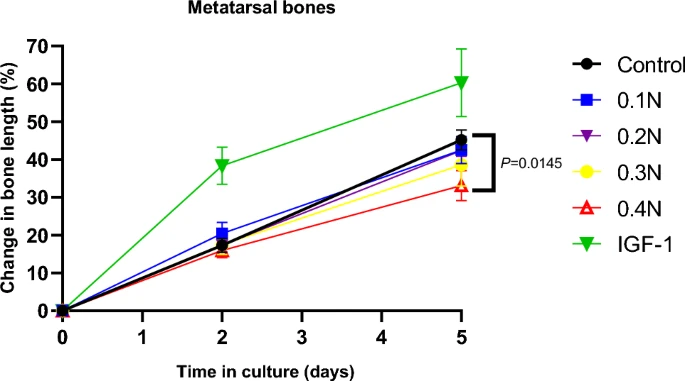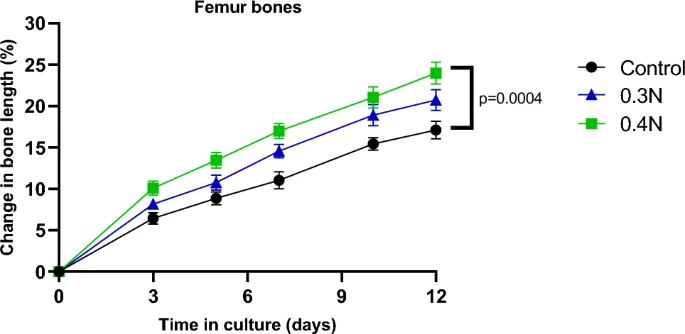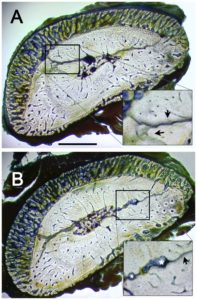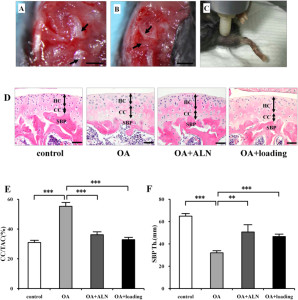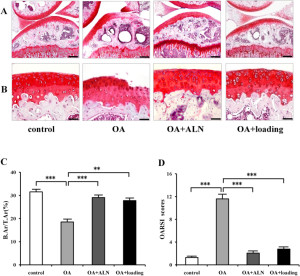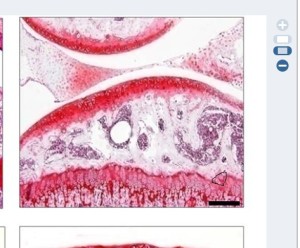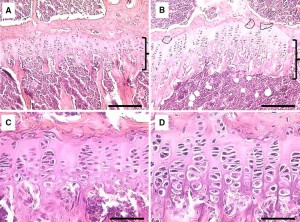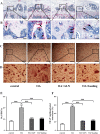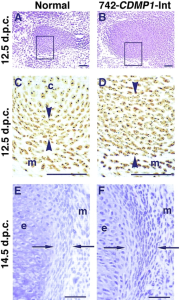Why LSJL Could Work And What We Have Been Doing Wrong, Thank You Nixa Zizu – Big Breakthrough!
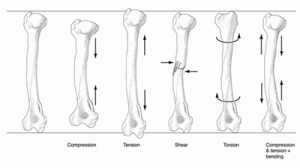 Just today a follower of the website who calls himself Nixa Zizu (who is one of our biggest supporters and contributors) uploaded information to the Natural Height Growth Facebook page which might have really cracked open the case on why it seems that LSJL might not be working so most of the people who have been doing it.
Just today a follower of the website who calls himself Nixa Zizu (who is one of our biggest supporters and contributors) uploaded information to the Natural Height Growth Facebook page which might have really cracked open the case on why it seems that LSJL might not be working so most of the people who have been doing it.
His results after just 2 weeks of doing the technique have resulted in almost half a centimeter of height gain. In my personal experience in getting accurate readings on height from using just rulers and stadiometers suggest that it is a large difference, which is unlikely due to just the normal diurnal variations we usually use as a reason to explain any differences in measured height.
The Message is below…
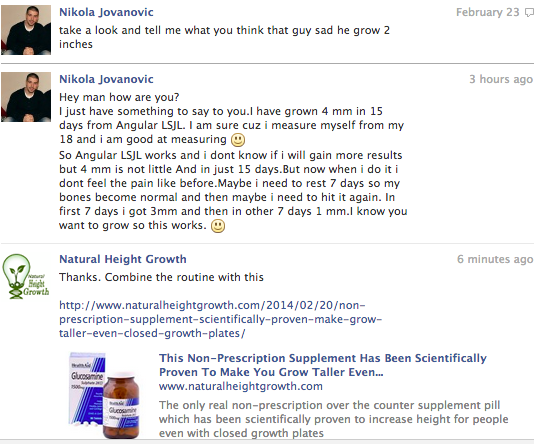
Nikola is sort of a famous Serbian YouTube celebrity that has a Serbo-Croatian audience. He has been in contact with us and promised me that he would start doing the LSJL routine consistently to see if he could get any real noticeable, results. (Click Here to Subscribe to his YouTube Channel Nixa Zizu)
Now that he has stated that he increased his height by 4 mm by doing what is known as Angular LSJL, it gives us a 2nd data point to work with.
Humans are creatures who have brains designed to notice any type of pattern, to make order and sense of the trillions of sensory input that reaches the brain every single moment. I am making a note that I see a pattern from just two data points, where both of the people have said that we need to actually correct (slightly adjust) the way we have been doing LSJL.
Nixa’s claim is just 1 of those data points. The other data point comes from the LSJL Forum in the thread “LSJL works… If Done This Way“. The post of the thread calling himself gr0wthnut claims to have gained 1.5 inches in height.

Whoever this gr0wthnut is, he also made the point that the location we are supposed to clamp down on is not exactly correct. I also suspect that the poster on the forums named Nixalsjl which exchanged a round of posts with gr0wthnut is Nicola of YouTube fame and he took the advice he got from Gr0wthnut and actually applied it in his own slightly modified LSJL routine. I am personally proud of this fact since we are now making real improvements on the original idea, which has not been improved upon for almost 5 years now.
You can see his video below…
This is the other 2nd data point. We can make a trend line using just 2 data points and jump maybe too quickly to seeing some type of pattern (which might not even be there). What would be nice is to get a 3rd or even 4th case of someone who noticed height gains after doing this modified approach.
So what did we learn and what do we take away from reading this post?
It seems that we have been wrong about the location about where to load/clamp. The standard theory that you clamp laterally on the side protruding bony part of the epiphysis may not be the best place. It is actually in the bony sloping/slanted bone area just below the epiphysis. This is the location on where gr0thnut and Nixalsjl are referring to.
I always had personal reservations against the method since it made no sense from a biological perspective how clamping laterally would make bone grow longitudinally in the axial direction. I’ve written almost half a dozen posts over the last 2 years going back and forth trying both to 1. prove or 2. disprove this idea that Tyler has been trying to prove for more than half a decade now. One of my first round of questions to him was over the idea on how the hell does induced chondrocytes from the MSCs manage to push outwards in all 5 directions (the 6th direction would be just pushing inwards) against the wall of the epiphysis made of cortical bone to make the epiphysis larger in volume.
I have never been able to fully swallow the idea of LSJL completely since it makes no sense from a materials or mechanical point of view. No matter how I try to wrap my head around it, it just makes no sense to me on an intuitive level (It just doesn’t seem right) , even after multiple times Tyler tried to clarify to me how the molecular mechanism would work. The bones are not thin and malleable like a balloon which would just puff up from a slight bit of pressure in some region. They are harder than stainless steel if you apply a load in the right direction.
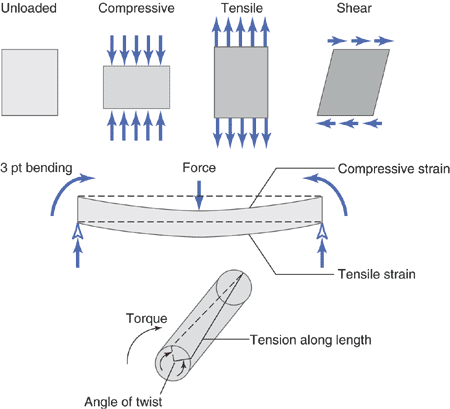 However, this angular idea makes more sense.
However, this angular idea makes more sense.
While most scientific analysis requires a lot of lab experiments, mathematics and physics knowledge to comprehend what could happen if we change one variable in the system, to figure out how bones would react to say a clamp pressing down on them requires just intuition on how large objects work. You can use intuition to make many arguments.
Let’s look that the types of loading that has been traditionally defined from above. Most calculations you do in at least introductory civil engineering and mechanical engineering course gives you very simple diagrams to analyze, formulate, and solve for some variable. You have to deal with just forces that is tensile, compressive, shears, strains, or torsional.
What we are suggesting can not be easily modeled, because you are loading on the slanted part before the epiphysis head starts. I would suspect that the region we are going to be mechanically stimulating would be also the soft and most easily deformed area.
Imagine that the epiphysis is like a tube of toothpaste. Remember how most parents tell their kids to squeeze the toothpaste, to go from bottom up, squeezing not in the middle, as the original theory says, but to squeeze from the edges to push the entire content upwards. That is similar to what I am at least saying. In the process of squeezing the toothpaste from the bottom up, the upper part protrudes outwards, extending the volume on the upper side, which is what causes the little bit of bone volume change.
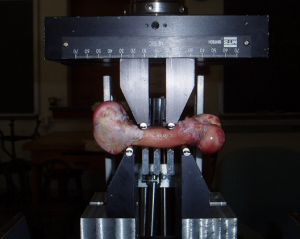 The last major point comes from the book The Body Electric by Dr. Robert Becker which I have referenced multiple times before. In one specific section, his research team tried to figure out what is the exact molecular mechanism to allow for Wolff’s law to be possible. How does the bones actually remodel themselves from a mechanical load? After bending the bones and noticing that the thickness of the bones increased in the opposite area where the bones were loaded, they came up with the theory that if you bend a long bone just like when you are trying to bend a wooden rod, the electrons pop out out of the side where you are bending them and move toward the side where the they are experiencing the most compressive load. The excessive in electrons causes certain molecules to move to that side to balance out the charge differences, adding more bone thickness in the process.
The last major point comes from the book The Body Electric by Dr. Robert Becker which I have referenced multiple times before. In one specific section, his research team tried to figure out what is the exact molecular mechanism to allow for Wolff’s law to be possible. How does the bones actually remodel themselves from a mechanical load? After bending the bones and noticing that the thickness of the bones increased in the opposite area where the bones were loaded, they came up with the theory that if you bend a long bone just like when you are trying to bend a wooden rod, the electrons pop out out of the side where you are bending them and move toward the side where the they are experiencing the most compressive load. The excessive in electrons causes certain molecules to move to that side to balance out the charge differences, adding more bone thickness in the process.
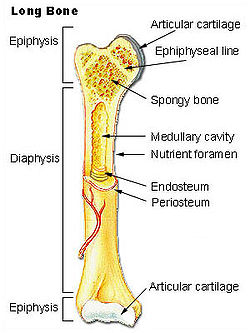 If we then use the simple principle that the thickness of bones increases in the opposite direction of a mechanical load, to make the upper area of the epiphysis thicker, we would need to load in the opposite direction. Obvious that would not be possible, since we prefer to view the bone as a cylinder with both ends attached axially to another long bone. There is no way to make the proximal epiphysis end of a tibia longer by loading the distal epiphysis end of the same tibia, unless we cut off the feet.
If we then use the simple principle that the thickness of bones increases in the opposite direction of a mechanical load, to make the upper area of the epiphysis thicker, we would need to load in the opposite direction. Obvious that would not be possible, since we prefer to view the bone as a cylinder with both ends attached axially to another long bone. There is no way to make the proximal epiphysis end of a tibia longer by loading the distal epiphysis end of the same tibia, unless we cut off the feet.
That means that the next best thing, to get as close to the opposite direction of the epiphysis top surface is to load in the direction of the slant/angular region of the epiphysis right before the protrusion begins. That is what I suggest we start to do and change towards.
So, again, do you see the picture to the upper right? See where the line/arrow that is showing the label “spongy bone” is point at in the part of the epiphysis ? Load there.
The Take-Away – Change the location to clamp on the Angular or Slanted Area just before the epiphysis protrusion area is most pronounced, which is almost opposite of the top of the epiphysis
{So you’re suggest to load below the epiphysis? That might be interesting as it would increase pressure within the epiphysis rather than the entire bone. I might have to try that and see if can get the immediate results I got with finger loading. With finger loading, I’m loading a much larger area which would include the area where the epiphysis meets the diaphysis.
Right now the current method suggests loading where the epiphysis meets the articular cartilage. This new method would suggest loading where the epiphysis would meet the diaphysis. A drawback would be no loading two bones and once. Another drawback would be that the end of the epiphysis is weaker and is more susceptible to deformation via mechanical load. I will still give it a shot.-Tyler}
Other Issues
There have been a few concerns within the community of people trying out the LSJL routine since Tyler did post an update to his height gains in the recent post “Height Increase Progress Update“ where he said that his recent visit to the doctor showed that he was 5′ 8.25″. This would suggest that maybe he never got any gains in all the years he has been trying. Other doctors offices have said that he is at 5′ 9.75″. For me, I am not sure what to make of this new information. A 1 and a half inch discrepancy in measured height from one doctor’s office to another is very extreme. Maybe the gains he did get for a few years was lost but I have no idea what to make of it at this time.
I am not that concerned with whatever his gains are, since he still does great work in research and contributing to the website. His effort and work has helped push the endeavor extremely far and revealed multiple new ideas on how we should proceed into the future.
Also, the recent thread on Miles Cordell from the UK claiming to disprove this idea has to be taken into consideration. So is Mr. Cordell’s claim valid? He says that he has never found one valid scientific paper to back up the idea His idea is that the knees or whatever synovial joints one would clamp down on would become swollen, which might cause a temporary illusion of height gain.
I can’t say much to this since he hasn’t looked over the study where older lab mice had their long bones increase in length from intermittent mechanical loading of the joints. (and yes, we all realize that in mice, the epiphyseal cartilage doesn’t really ever go away)
